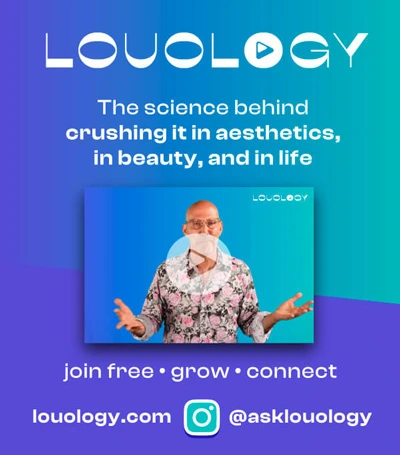Esthetician Career Paths
If you love beauty and skin care, becoming a cosmetic laser esthetician could start your dream career. Estheticians are the unsung heroes of the beauty world working in salons and spas, making sure their clients look and feel their best. What if you could take your career to the next level by working for a dermatologist?
 An esthetician who works for a dermatologist is responsible for performing treatments such as radio frequency treatments, BroadBand Light (BBL) laser acne reduction, and Halo Fractional treatments. With this in mind, because dermatologists need medical estheticians to perform these treatments, they are looking to pay top dollar for an esthetician trained in cosmetic laser technology. If you find yourself seeking a dream esthetician career, look no further than dermatology. In order to be hired by a dermatologist, you will need to be trained in all of these areas. Once you land the job, you will be on your way to a career that is both fulfilling and beautiful.
An esthetician who works for a dermatologist is responsible for performing treatments such as radio frequency treatments, BroadBand Light (BBL) laser acne reduction, and Halo Fractional treatments. With this in mind, because dermatologists need medical estheticians to perform these treatments, they are looking to pay top dollar for an esthetician trained in cosmetic laser technology. If you find yourself seeking a dream esthetician career, look no further than dermatology. In order to be hired by a dermatologist, you will need to be trained in all of these areas. Once you land the job, you will be on your way to a career that is both fulfilling and beautiful.
Esthetician Training: Cosmetic Laser Technician
What is a Dermatologist?
A dermatologist is a surgeon and physician that has undergone specialty training in skin, hair, and nails.
What is an Esthetician?
An esthetician is one who provides services specifically focused on skin treatments, makeup application, hair removal, and facials.
What is a Cosmetic Laser Technician?
A cosmetic laser technician is an individual who has undergone the necessary training to use cosmetic lasers for different skin care treatments. Moreover, cosmetic laser technicians evaluate the skin concerns of their clients, develop treatment plans, and apply cosmetic laser treatments.
Esthetic Laser Treatments
Radio frequency
An Radio frequency treatment uses state-of-the-art technology to tighten the skin and improve skin tone.
What does radio frequency treat?
Simply put, an radio frequency treatment works to treat deep wrinkles and fine lines. As well as that, radio frequency improves the appearance of acne scars.
How does radio frequency Work?
radio frequency skin rejuvenation technology works through the use of bipolar radiofrequency technology. Moreover, this high-tech treatment uses heat energy to stimulate collagen production deep within the skin. Due to this, the skin tightens and improves in laxity. The process of using heat energy deep within the skin stimulates the body’s natural healing process. With all this in mind, the overall skin tone and laxity improves, giving your client a more youthful appearance.
Broadband Light (BBL) Laser Acne Reduction
A Broadband Light (BBL) treatment kills the bacteria within the skin that causes acne. Due to this, the acne marks diminish while also decreasing redness.
What does BBL Laser Acne Reduction Treat?
BBL laser acne reduction kills the bacteria that causes pimples, cystic acne, pustules, and zits. As well as that, BBL laser acne reduction treats acne scars, active acne breakouts, and facial redness that is caused by acne.
What does BBL Laser Acne Reduction Work?
BBL Laser acne works by directing heat energy within the layers of the skin. This in turn targets the areas that promote new skin cell growth. As well as that, BBL laser acne reduction uses photothermal energy to target the pigments within the skin that cause brown spots and redness. Due to this, the overall skin tone evens out. In addition, BBL lasers have a “blue-light effect,” that works to destroy the bacteria that causes acne.
Halo Fractional
What Does a Halo Fractional Laser Treat?
A Halo Fractional laser is best known for treating the signs of photoaging, or sun damage. As well as that, Halo Fractionals treat freckling, minor tone, and minor texture issues of the skin.
How Does a Halo Fractional Treatment Work?
A Halo Fractional treatment works by using both ablative and non-ablative wavelengths. An ablative laser simply means the laser removes a very thin layer of the outer skin while heating the underlying tissue in the dermis. Due to this, collagen production is increased, improving the skin’s tone and texture.
A non-ablative laser uses heat energy to stimulate deep into the dermal layer of the skin. Due to this heat energy, collagen production is stimulated to provide new cell growth. The outermost layer of the skin remains untouched with a non-ablative laser. A Halo Fractional is the best of both worlds, providing ablative results, with the downtime of a non-ablative laser.
National Laser Institute Trains Estheticians
If you are interested in taking your esthetician knowledge further to work in dermatology, come to National Laser Institute. National Laser Institute hosts courses held by leading dermatologists, cosmetic surgeons, and medical estheticians. With this in mind, you will study the latest in cosmetic laser treatments and technologies. Join National Laser Institute’s esteemed alumni and contact us today.
“Finding your purpose isn’t only about making great money, it’s about so much more. It’s about tapping into your passions and chasing your dreams.” – Louis Silberman CEO

About the Author
Louis J. Silberman is the CEO and Co-Founder of National Laser Institute, the pioneer of the medical aesthetics training industry and the largest educator in the country. NLI also operates one of the busiest medical spas in the country, seeing up to 3,000 clients per month. Louis Silberman is also an entrepreneur who has been named Ernest and Young’s EY Entrepreneur of the Year Semifinalist.









